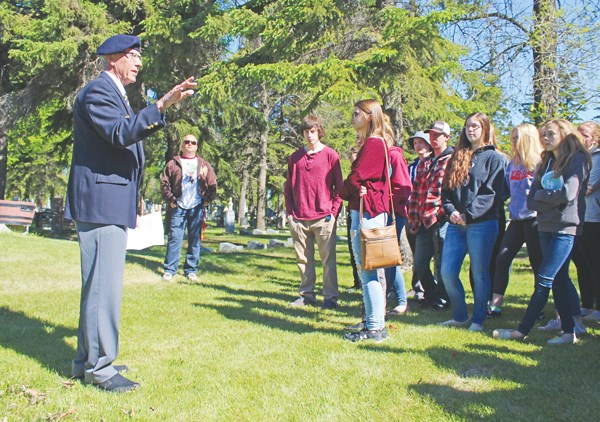In 1936, General Alexander Ross, World War I veteran and the namesake of the Yorkton branch of the Royal Canadian Legion led an expedition to Vimy Ridge for the unveiling of the Canadian memorial there.
Four ocean liners carried more than 6,000 Canadian veterans, their wives and parents and children of their fallen comrades to France.
The British Legion had established a tradition of selling little wooden crosses along with poppies to honour deceased comrades.
The crosses were planted in the graveyard at Westminster Abbey. After Armistice Day (Remembrance Day) 1935, the crosses were burned and the ashes placed in a small wooden casket.
During the dedication ceremony of the Vimy Memorial, Ross participated with the British Legion in a scattering of the ashes on the east face of the memorial where the names of the dead are inscribed.
He was then presented with the casket, which remains in the possession of the Yorkton Legion to this day.
In Yorkton, the wreaths used in Remembrance Day ceremonies in 2016 were burned and placed in the casket to be scattered in the soldiers’ area of the Yorkton City Cemetery on D-Day, which marks the Allied victory in World War II.
This is a tradition that started in Yorkton after Second War, but fell out of practice. It has recently been resurrected.
On May 30, students from Perry Ostapowich’s Grade 10 History and Robby Sharpe’s Grade 10 physical education classes at Yorkton Regional High School visited the cemetery where they heard a presentation on the casket’s and ash ceremony’s histories from Yorkton Legion branch president Barry Whitehead.
The students then cleaned the headstones of Yorkton veterans in preparation for the D-Day ceremony yesterday during which the ashes from last year’s wreaths were scattered.



